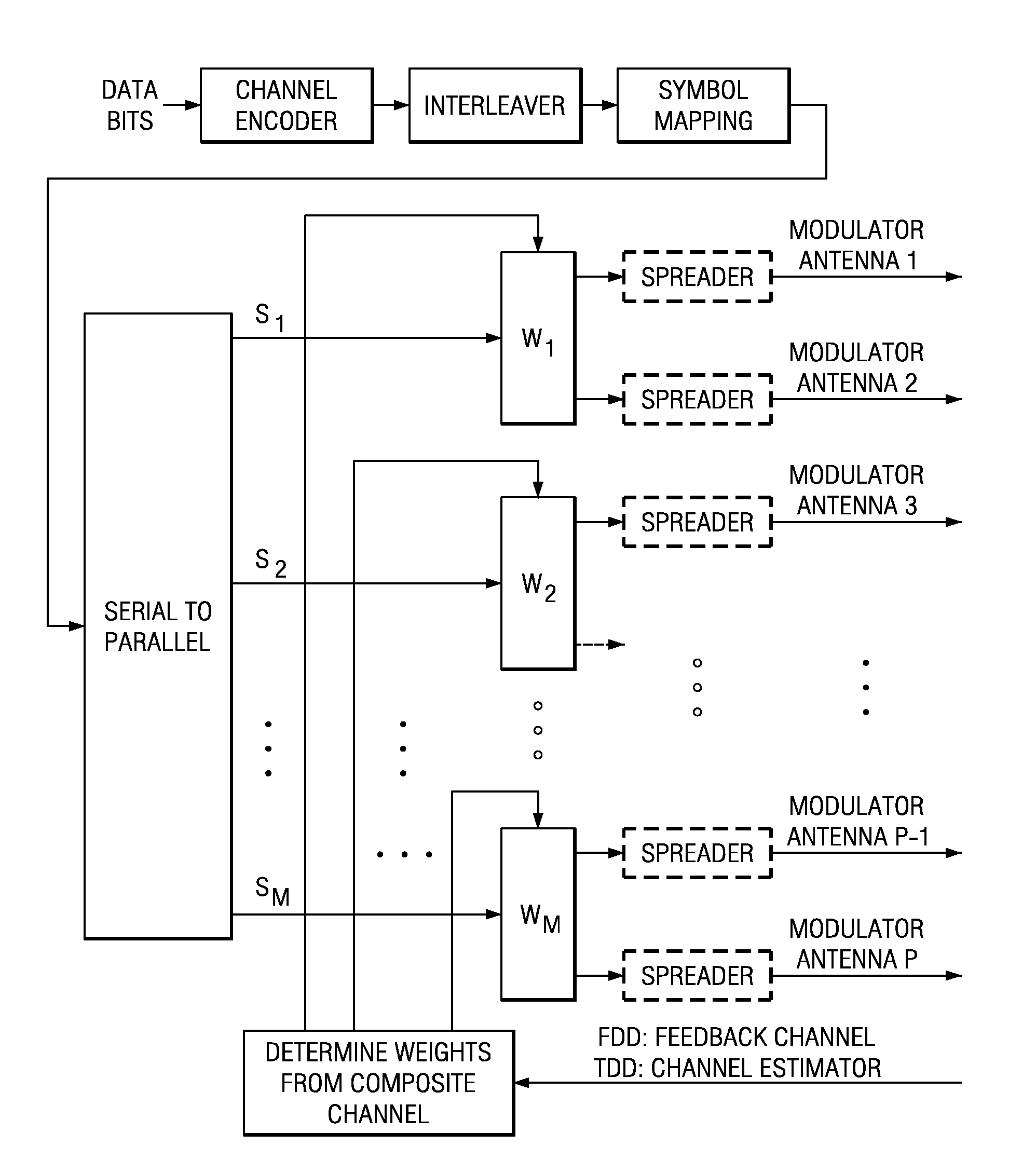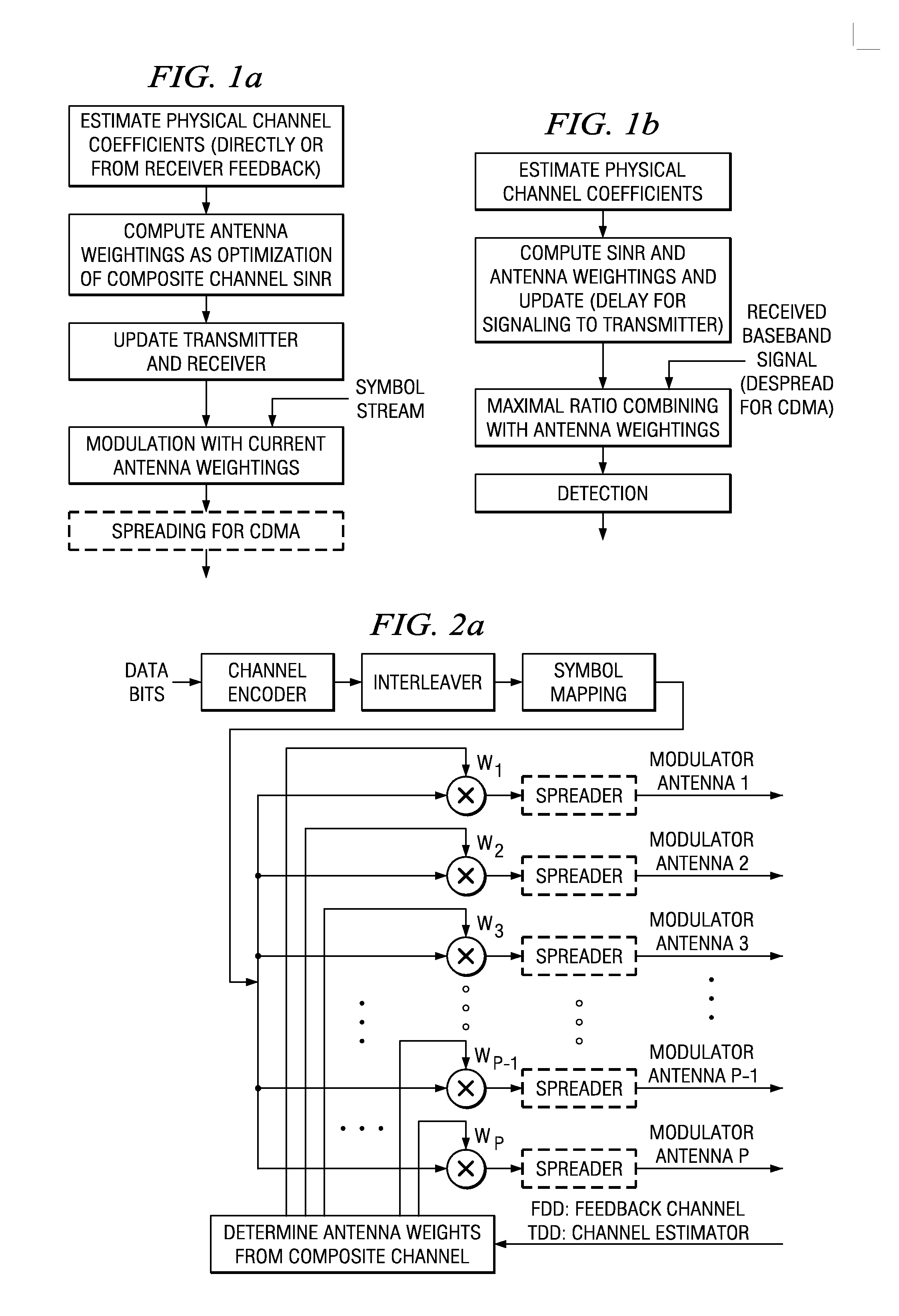High data rate closed loop MIMO scheme combining transmit diversity and data multiplexing
a closed loop, high data rate technology, applied in diversity/multi-antenna systems, modulation, electromagnetic wave modulation, etc., can solve the problems of limited diversity gain of such schemes and limited peak data rate, and achieve the effect of increasing the performance of wireless communications
- Summary
- Abstract
- Description
- Claims
- Application Information
AI Technical Summary
Benefits of technology
Problems solved by technology
Method used
Image
Examples
Embodiment Construction
1. Overview
[0015]The preferred embodiment methods determine antenna weightings in closed-loop multi-antenna multiplexed-data-stream systems by incorporating the effect of multipath interference as well as the detection scheme used at the receiver for closed-loop transmit diversity weight vector selection. An example of such selection criterion is to maximize minimum signal-to-interference-plus-noise ratio (SINR) of the composite channel (physical channel plus equalization / interference cancellation), where SINR is defined as the ratio between the average power of the desired signal component and the average power of interference plus noise.
[0016]Preferred embodiment transmissions and reception use such antenna weightings with adaptive updating and may include multi-input multi-output (MIMO) systems; see FIGS. 1a–1b flow diagrams. These methods apply to the various wireless communications approaches (CDMA, TDMA, etc.), and extend to multiplexed data stream versions. For a TDD system t...
PUM
 Login to View More
Login to View More Abstract
Description
Claims
Application Information
 Login to View More
Login to View More - R&D
- Intellectual Property
- Life Sciences
- Materials
- Tech Scout
- Unparalleled Data Quality
- Higher Quality Content
- 60% Fewer Hallucinations
Browse by: Latest US Patents, China's latest patents, Technical Efficacy Thesaurus, Application Domain, Technology Topic, Popular Technical Reports.
© 2025 PatSnap. All rights reserved.Legal|Privacy policy|Modern Slavery Act Transparency Statement|Sitemap|About US| Contact US: help@patsnap.com



